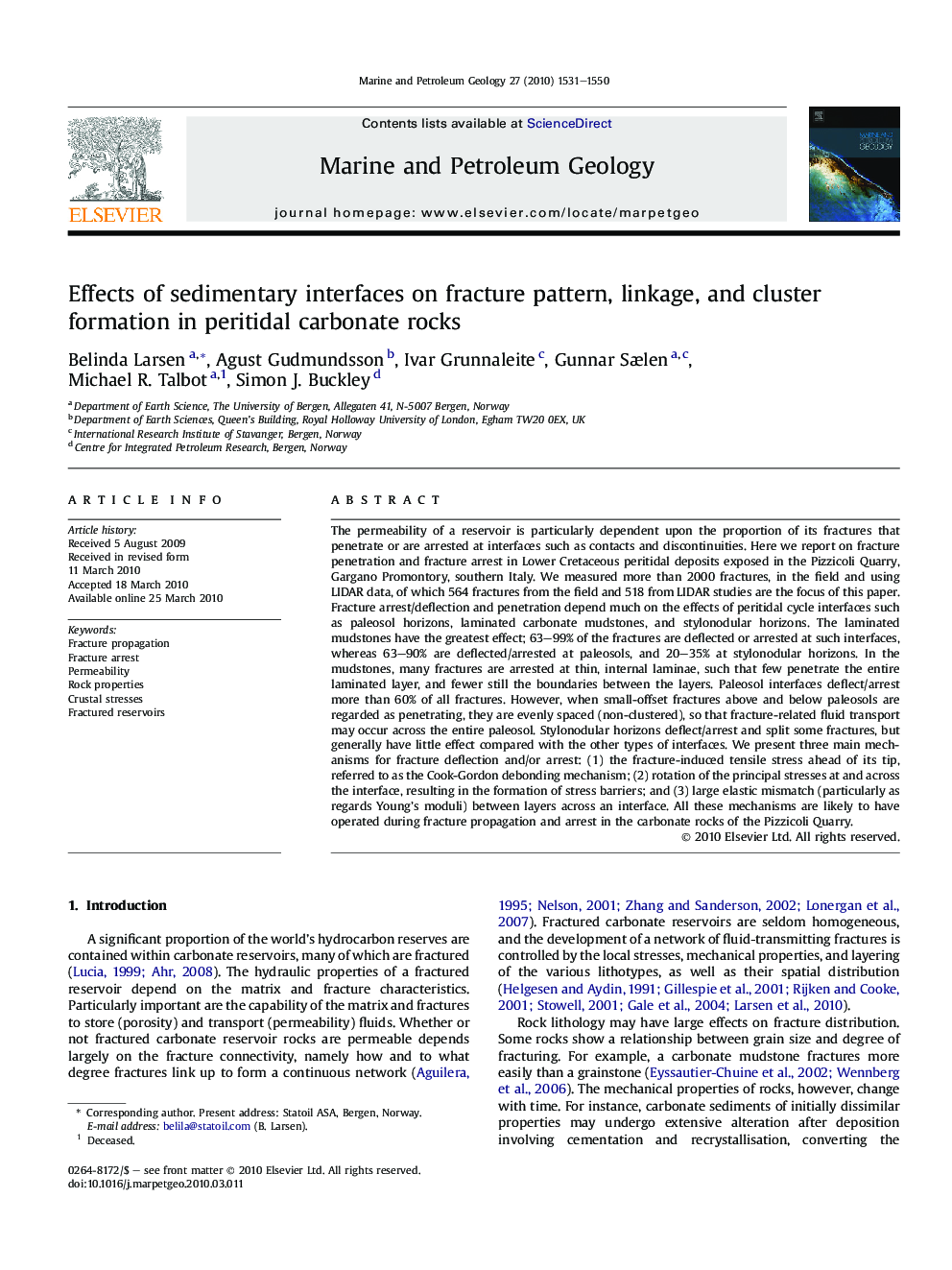| کد مقاله | کد نشریه | سال انتشار | مقاله انگلیسی | نسخه تمام متن |
|---|---|---|---|---|
| 4696220 | 1351662 | 2010 | 20 صفحه PDF | دانلود رایگان |

The permeability of a reservoir is particularly dependent upon the proportion of its fractures that penetrate or are arrested at interfaces such as contacts and discontinuities. Here we report on fracture penetration and fracture arrest in Lower Cretaceous peritidal deposits exposed in the Pizzicoli Quarry, Gargano Promontory, southern Italy. We measured more than 2000 fractures, in the field and using LIDAR data, of which 564 fractures from the field and 518 from LIDAR studies are the focus of this paper. Fracture arrest/deflection and penetration depend much on the effects of peritidal cycle interfaces such as paleosol horizons, laminated carbonate mudstones, and stylonodular horizons. The laminated mudstones have the greatest effect; 63–99% of the fractures are deflected or arrested at such interfaces, whereas 63–90% are deflected/arrested at paleosols, and 20–35% at stylonodular horizons. In the mudstones, many fractures are arrested at thin, internal laminae, such that few penetrate the entire laminated layer, and fewer still the boundaries between the layers. Paleosol interfaces deflect/arrest more than 60% of all fractures. However, when small-offset fractures above and below paleosols are regarded as penetrating, they are evenly spaced (non-clustered), so that fracture-related fluid transport may occur across the entire paleosol. Stylonodular horizons deflect/arrest and split some fractures, but generally have little effect compared with the other types of interfaces. We present three main mechanisms for fracture deflection and/or arrest: (1) the fracture-induced tensile stress ahead of its tip, referred to as the Cook-Gordon debonding mechanism; (2) rotation of the principal stresses at and across the interface, resulting in the formation of stress barriers; and (3) large elastic mismatch (particularly as regards Young’s moduli) between layers across an interface. All these mechanisms are likely to have operated during fracture propagation and arrest in the carbonate rocks of the Pizzicoli Quarry.
Journal: Marine and Petroleum Geology - Volume 27, Issue 7, August 2010, Pages 1531–1550